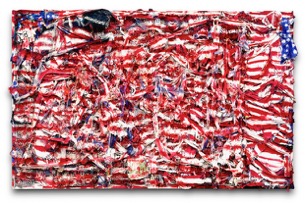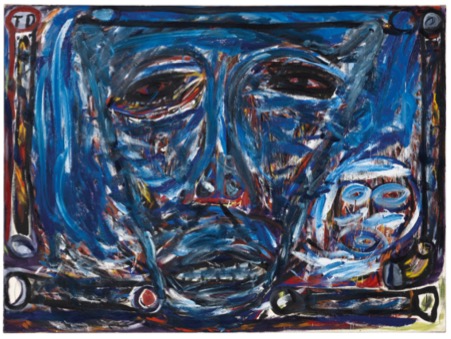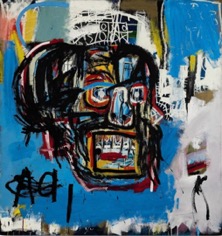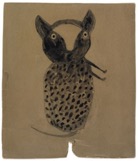How do we seek to define ourselves as individuals? Difference. Be that colour, ethnicity, background, gender or simply variety of experience. Difference is key to success, positive change and culture.
Difference is also crucial to art. The best artists always seem to have experiences that define them, experiences that are often singular, that distinguish them from the rest of society. This results in unique insight and the production of remarkable pieces – a timeless example being Francis Bacon’s grotesque screaming popes, one of which sold for $30m in 2012. As a child, Bacon moved house so many times that it led to a sense of displacement that remained with him, and influenced him, throughout his life. Ignored by wealthy parents who cared little for his passion regarding art, he became a marginalised man who took to dating East-End gangsters in a period where homosexuality was illegal.
Kerry James-Marshall, is another perfect example of difference; his epic narrative painting, depicting black figures in a typically ‘white suburbia’, sold for $21.1m to P. Diddy. Growing up in a Los Angeles heavily influenced by the Black Power movement and ongoing Civil Rights Battle allowed him to explore black identity and visibility in a way few had considered before. Jean-Michel Basquiat, a further example of what it is to be different, had an enormous effect on the contemporary art market. Growing up impoverished in Brooklyn, a child of Haitian immigrants, he saw his mother institutionalised age 13 and ran away from home at 15, before an accidental heroin overdose killed him when he was just 27 year old. His nightmarish painting of a black skull baring its teeth, Untitled (1982), sold at Sotheby’s for $110.5m.
But surely by now these painters are no longer different? Soaring prices means that their artwork is intrinsically part of a system in which they actively tried to avoid (or even subvert). Basquiat’s prices put him in the same category as Picasso (the privileged child of a professor and art curator, sent by his father to Spain’s most exclusive art school) or any number of carbon-copy graduates from the Chelsea College of Arts, desperately trying to craft a unique take on ‘Conceptual’ or ‘Performance’ Art.
So what is ‘different’ art now? What is the quality so truly out of kilter with the rest of the market, which renders the artist something that is only definable by their marginalised status, a quality whereby they can only be described as ‘Outsiders’? The answer: a category literally called ‘Outsider Art’.
To quote Cara Zimmerman, Outsider Art is ‘created by people that aren’t working within an artistic establishment’ who tend not to have formal training or be influenced by other famous artists. These people are largely removed from the mainstream pop-culture world. They lead very simple lives and as such have created hugely interesting works, combining both a child-like naivety and curiosity (e.g. the works of Traylor) and a primal, raw style of painting (seen most clearly in Thornton Dial), often using objects recycled from around them. There are famous collectors of Outsider Art too. Ricky Gervais is a fan, owning art painted with road tar by a chronic schizophrenic; Jeffrey Archer owns a wooden ball and chain sculpture formed from 12,000 matchsticks, that he bought at a prison art auction.
On 18th January, one of the largest auctions of Outsider Art to date is taking place at Christie’s, New York. Encapsulating the collection of American financier William Louis-Dreyfus, it focuses on the work of artists with a strong social message: Thornton Dial, a railroad worker from Alabama; Bill Traylor, a farmer from Alabama; Clementine Hunter, a plantation worker from Louisiana; and Nellie Mae Rowe, the daughter of slaves from Georgia.

Figure 3: Thornton Dial (2003), ‘Don’t Matter How Raggly The Flag, It Still Got To Tie Us Together’. Indianopolis Museum of Art.
Thornton Dial’s painting, The Reservoir, predicted to sell for between $25,000 and $50,000 on Friday, is an excellent example of Outsider Art with a community message. A large and predominantly blue painting, it features faces directly looking at the viewer, sombre eyes turned downwards, faces scarred with flashes of red and yellow, and teeth bared between black lips. To me, it perfectly captures Dial’s message about ‘how the Negro has been mistreated in the United States, how he been used.’ The features on the side of the painting are ambiguous but they resemble logs and railroad tools – either way, they directly link to Dial’s message of exploitation. It is a message about how a whole race of people was used to build the American economy, infrastructure and means of transportation with few benefits in return. However, Dial’s art exists as more than just a statement of anger and upset. Indeed, it speaks of power and freedom. The bared teeth, the unbroken stare and the glimpses of warm brightness behind the cold blue all indicate strength. Dial’s patron Bill Arnett once told him that he could ‘bring civil rights to people in ways that Martin Luther King didn’t live to,’ and up until his death in January 2016, Thornton wholly delivered this maxim.
It is clear that difference remains as important as ever to the world of art: the exceptional backgrounds, lack of training and different perspectives offered by painters such as Thornton Dial may not have as shocking an effect on the market as previous pioneers such as Basquiat and Bacon, but they put across important messages which should not be ignored. Freedom, strength and power, all painted by a group of people largely cut off from the rest of a technologically adapted and celebrity-status focused America. Unlike most collections owned by billionaires, William Louis-Dreyfus’ is less concerned with big names and investment-pieces and instead shows an acute awareness of how being an outsider isn’t always a bad thing.
In fact, it can be a very great thing indeed.




Such eloquent prose. Usually I think art is boring as shit and often overvalued however such was not the case with this article! Talk about entertainment and getting your moneys worth!
I’ve never met this person but he clearly has a very great knowledge of art and if I might say so, very eloquent writing style’
Great stuff, Nick! Really interesting insight into a genre of art that often falls by the wayside. Look forward to seeing more of your articles in the future!
A stimulating read and a fantastic article. Clearly an author with a great sense of inclusivity and diversity.